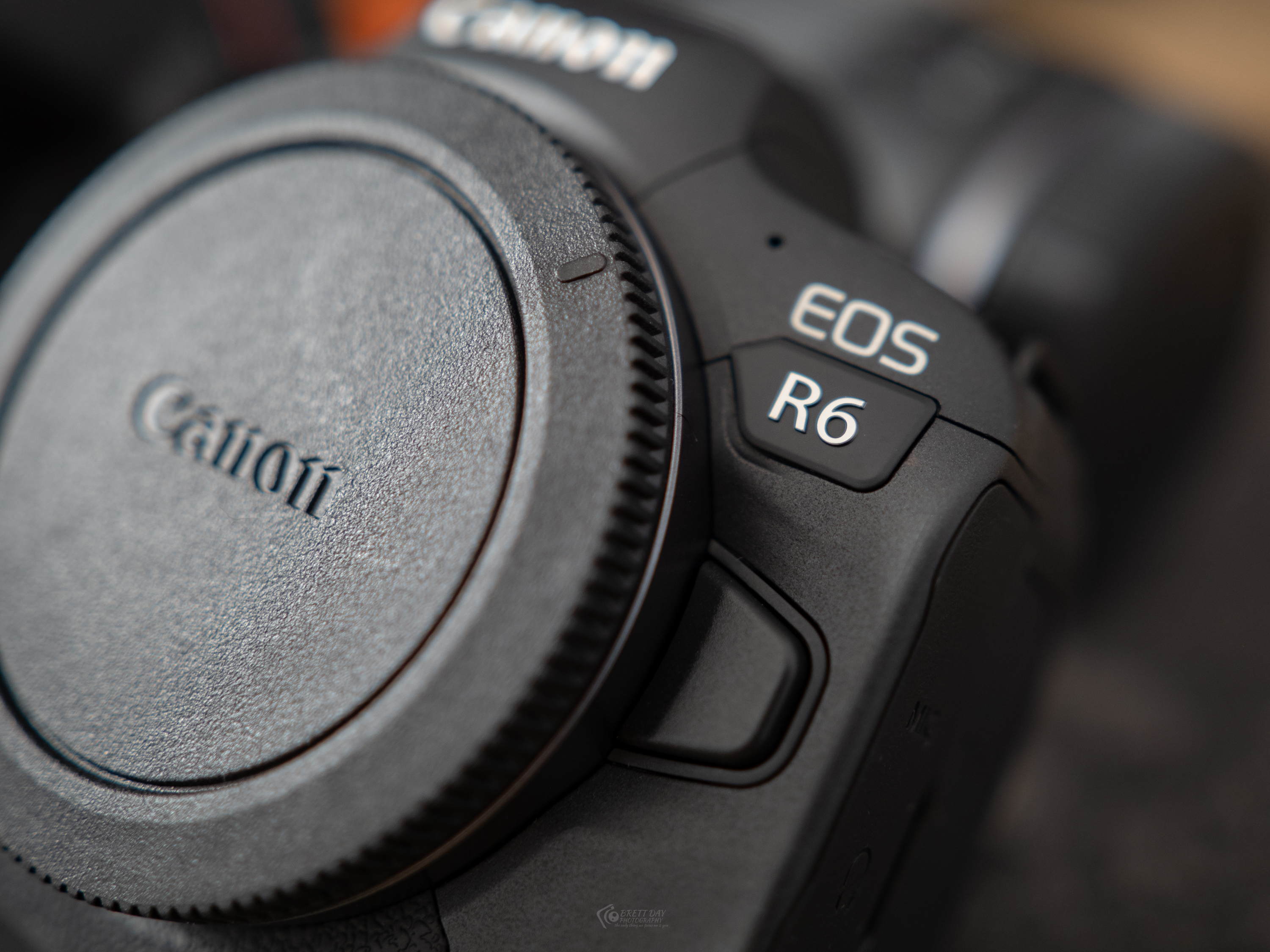A quick look at the new Canon EOS R6, the company’s latest entry-level Full Frame Mirrorless camera
There has been a lot of hype around two new Canon cameras, and as expected, the EOS R5 has stolen the spotlight, but many want to know more about its baby brother, the Canon EOS R6. The Full Frame Canon EOS R6 with its 20.1MP sensor, new IBIS and autofocus systems, and 4K recording options is aiming to take on the Sony a7 III, the Nikon Z6, and the Panasonic S1. On paper, the Canon EOS R6 will give them all a run for their money. I recently received our review unit from Canon and have started testing the camera, but before we wrap up our full review, we wanted to share our first impressions. Grab a chair, your favorite beverage, get comfy, check out what we have to say and look at plenty of our first sample images after the break.
EDITOR’S NOTE: THIS IS NOT OUR REVIEW. PLEASE DO NOT CALL IT SUCH.
Table of Contents
Tech Specs
All of the technical specifications have been taken directly from the official Canon website.
- Recording Media: Two SD card slots compatible with UHS-II
- Lens Mount: Canon RF mount
- Image Sensor: CMOS sensor 20.1MP, Low Pass filter installed in front of the image sensor
- Image Formats: JPEG, HEIF, RAW / C-RAW (CR3), C-RAW (Canon original); Movies: ALL-I (Time-lapse video only), IPB, MP45
- Viewfinder: OLED color electronic viewfinder with approx 100% coverage vertically and horizontally
- LCD: 3-inch vari-angle touchscreen TFT color, liquid-crystal monitor with 1.62 million dots
- Autofocus: Dual Pixel CMOS AF, 6072 selectable positions for stills, 4968 positions for video. Head and eye-detection and animal tracking
- IBIS: In-body Image Stabilizer can provide up to 8 stops of Shake Correction
- Focusing Brightness and AF Range: EV -6.5 to 20 for stills with f1.2 lens, EV -5 to 20 for video with f1.2 lens.
- Shutter: Electronic and mechanical, 1/8000 max shutter speed. 12 frames per second mechanical, 20 frames per second electronic.
- Operating Environment: 32-104° F / 0-+40° C, 85% humidity or less
- Dimensions: Approx. 5.45 x 3.84 x 3.48 in. / 138 x 97.5 x 88.4mm
- Weight: Approx. 1.5 lbs. / 680g (including battery, SD memory card; without body cap). Approx. 1.3 lbs. / 598g (body only; without battery, card or body cap)
- Battery: Canon LP-E6NH battery pack (also compatible with LP-E6N and LP-E6 battery packs)
- Interface: USB 3.1 Gen 1, HDMI micro out Type D, 3.5mm diameter stereo mini-jack for microphone, headphone jack compatible with 3.5mm diameter stereo mini-plug
Ergonomics
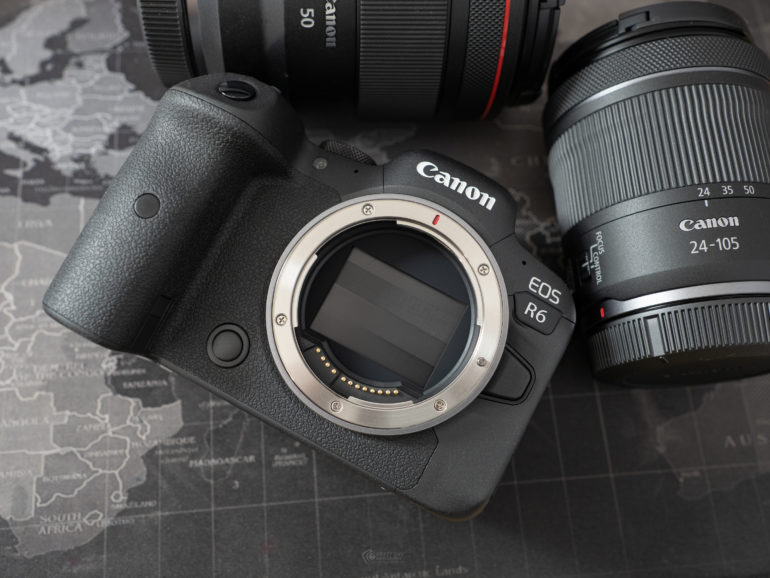
The Canon EOS R6 is unmistakably a Canon camera, and this is no bad thing. I have been a massive fan of Canon’s ergonomics for many years, and nothing about the R6 has made me change my mind. I would say that this is the first time I have been reminded of just how great previous 6D and even some 5D camera felt in hand via a Canon Mirrorless camera. Yes, the Canon EOS R6 feels that good. In the image above, you can see the deeply recessed grip, one assignable function button, and the lens release.
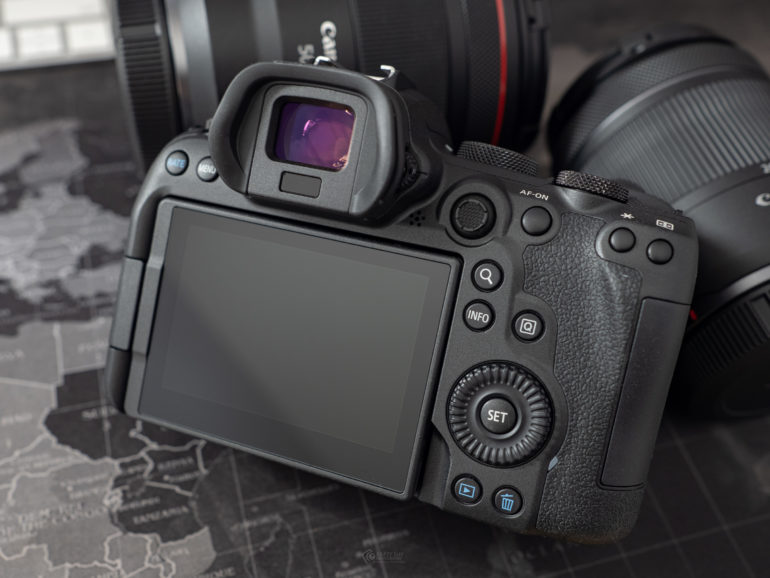
Around the back of the Canon EOS R6, you can see that the camera is dominated by the 3-inch vari-angle touchscreen. Flanking the screen are the jog dial, which controls your aperture settings, the set key, playback and delete buttons, the quick menu button, an info button and the magnify control. Further up towards the EVF, you’ll see the joystick, which is a welcome replacement to the touch bar found on the EOS R, your AF-ON control, and the focus mode button also located here. On the left-hand side of the EVF, you’ll find a dedicated button to rate your images and the primary menu key.
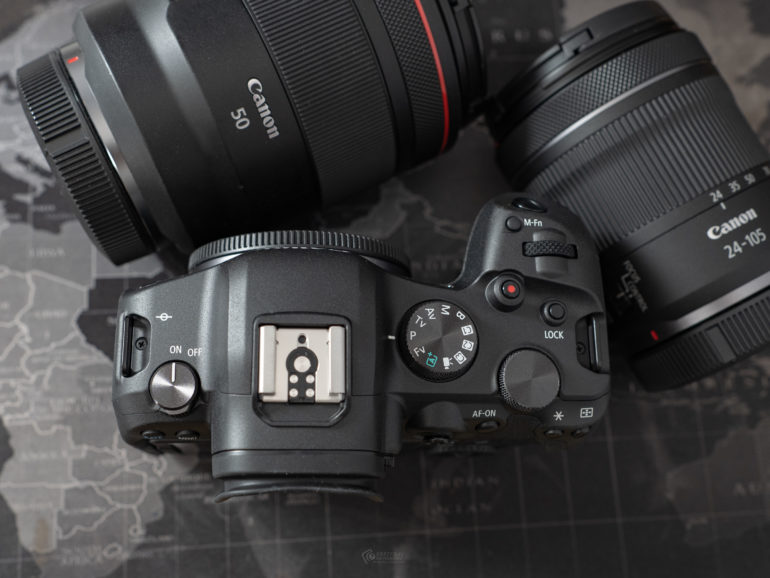
The top of the Canon EOS R6 is much more reminiscent of the EOS RP. You can see that there is no top LCD, but there is a mode dial, which is easy to use and well placed. To the right of the mode dial, you’ll find the record button, lock control, the shutter speed dial that sits at the top of the grip, a function button, and a dedicated dial for ISO control towards the back of the camera. On the left-hand side is the on/off dial.
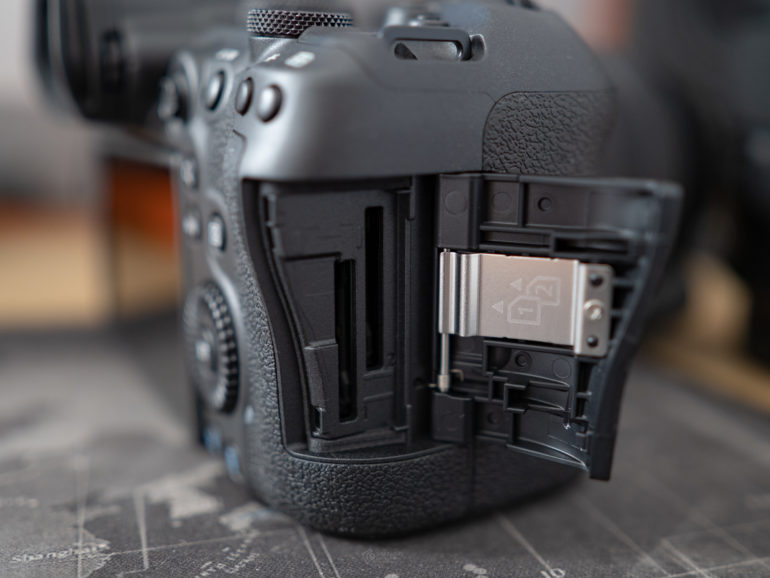
The right-hand side of the Canon EOS R6 houses the dual UHS-II card slots. This, in itself, is a fantastic addition to this camera. Aside from the card slots, there is nothing else going on on the right of the camera.
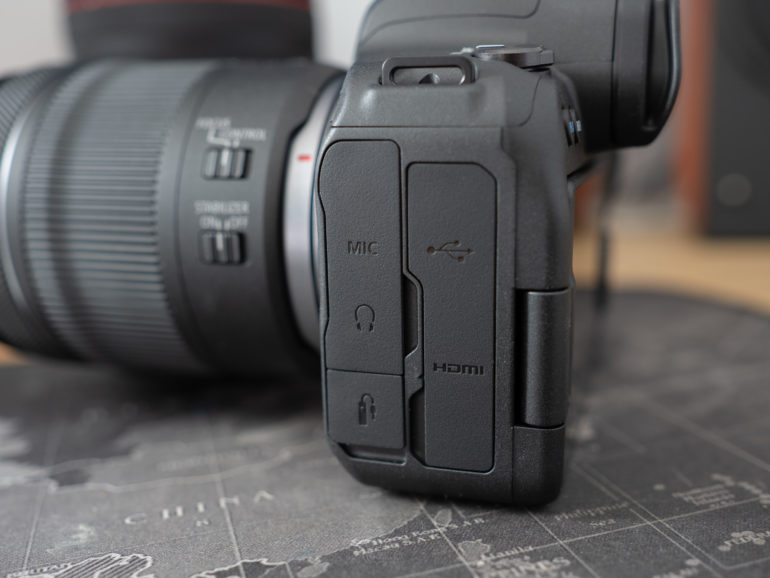
The left-hand side of the Canon EOS R6 houses all of the connectivity options. Here you will find a Micro-HDMI connection, a USB-C connector, both mic and headphone jacks of the 3.5mm variety, and a cable release connector.
While it might not look like a massive departure from the EOS R and RP, there are enough subtle changes to the design of the camera to remind you of past 6D and 5D cameras: it’s just a lot lighter than those DSLRs. The Canon EOS R6 weighs only 1.5lbs with the battery installed and without any lenses attached. If there was one complaint, it would be that the jog dial sits a little too far to the right, and because of this, you find yourself having to contort your hand and thumb into a slightly uncomfortable position when you want to use it. However, having said that, ergonomically, overall, the Canon EOS R6 is excellent.
Build Quality
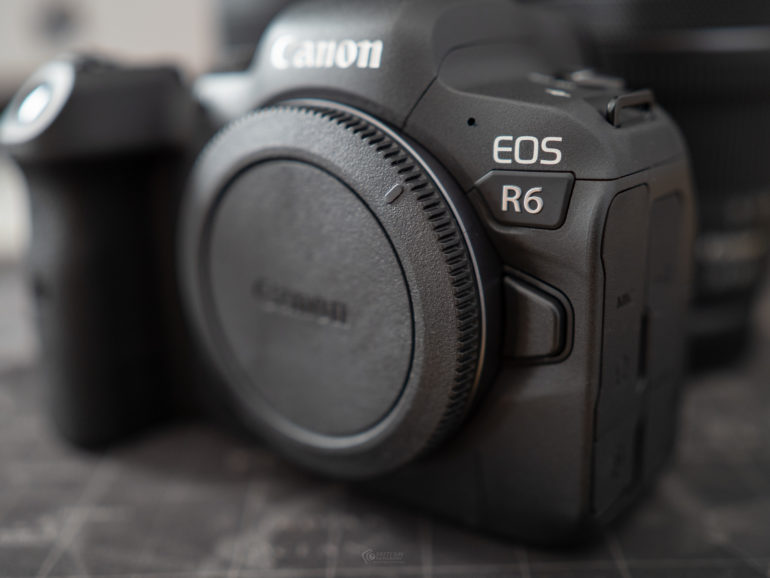
My initial thought on the Canon EOS R6 is it’s a well-built camera that will surely stand up to professional use. The EOS R6 is weather-sealed to the same degree as earlier EOS 6D models, which means you should be just fine if caught in the rain. (However, I have not had the chance to put the weather sealing to the test yet.) The body itself feels nice in hand, and the textured material that covers the front of the camera feels good too. All of the buttons and dials give excellent feedback when pushed or turned. I need to spend more time with the Canon EOS R6 to see how durable it really is, but initial impressions are that this is a solid camera.
Ease of Use
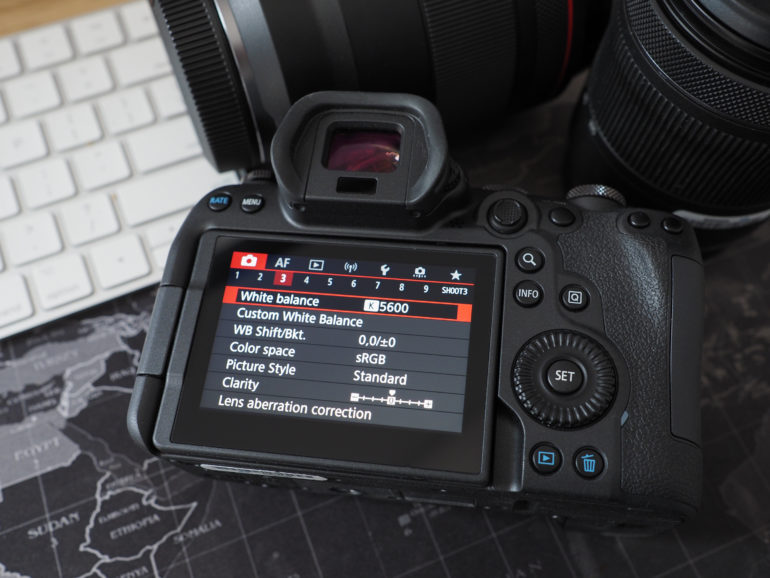
Photographers familiar with Canon cameras will feel right at home with the Canon EOS R6. The user-friendly button layout, the fully articulating screen, and the well-designed menu system make the R6 very easy to use. Touch screen control implementation is as good as ever, and you’ll find yourself sweeping, swiping, and pushing your way through options with the touchscreen in no time. The EVF on the Canon EOS R6 is quite nice as well. You have the option to switch between 60fps and 120fps. There is a notable difference between the two settings with 60fps being a little jarring at times, but how 120 affects battery life is unknown. I will monitor it closely, though.
The new IBIS system also makes this camera much easier to use than previous EOS R models as well. In initial tests, I have been able to get razor-sharp images with the RF 24-105mm f4-7.1 lens with shutter speeds as long as 2.5 seconds. In terms of battery life, we still have a lot of testing to do before we can say how good or bad it is, but after roughly 150 test shots, the battery has dropped 25% of its charge. We need to spend more time with the camera to provide a more thorough breakdown of what it’s like to use the Canon EOS R6, so stay tuned for our full review.
Autofocus

So far, the new Dual Pixel AF II system has been quite impressive. I have used the Canon EOS R6 in both excellent lighting and in the dead of night, and at no point has the camera had any issues. When using single-point, autofocus speeds are rapid, and the focus is accurate. The tracking and servo (continuous autofocus) seem to work as intended as well.
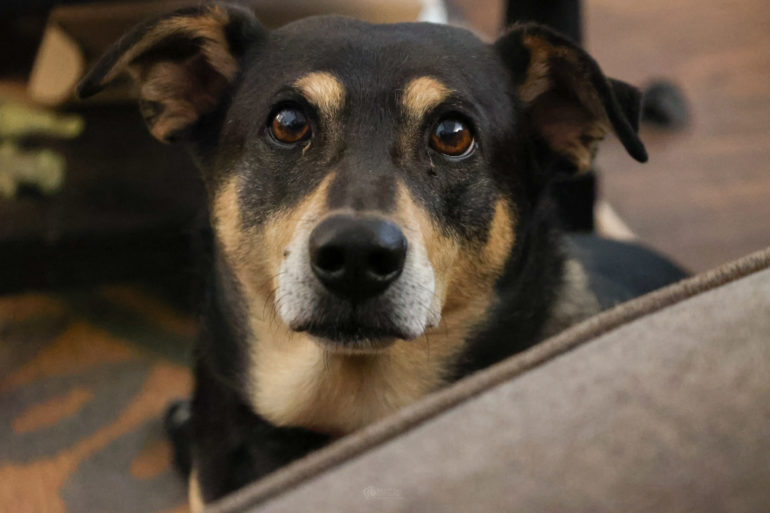
While I have not had a chance to test human eye AF, I have been able to check animal eye AF, and so far, it has worked flawlessly. The image above was shot in a dark room with animal eye AF turned on. Even in low light, the camera was able to detect and track my dog’s eye quickly. In the coming weeks, the R6 will be put through more challenging tests so that we can really see what the new autofocus system can do, but off the bat, I can say that the speed and responsiveness are better than the EOS R and RP.
Image Quality

Below you will find a mixture of straight out of camera JPEGS and a few RAW files that have been slightly edited. At the time of this First Impressions post, camera profiles for the Canon EOS R6 are not available for Capture One or Lightroom/Camera RAW, so I used Canon’s own DPP (Digital Photo Professional 4).
When we post our full review, we will break down image quality into our usual segments of RAW file versatility, JPEGS, and High ISO tests. We will say, though, that high ISO output from the EOS R6 is fantastic. I have done several test shots at ISO 25,600 and 51,200 and have been impressed. All images are marked accordingly as either SOOC JPEGS or edited RAW files.

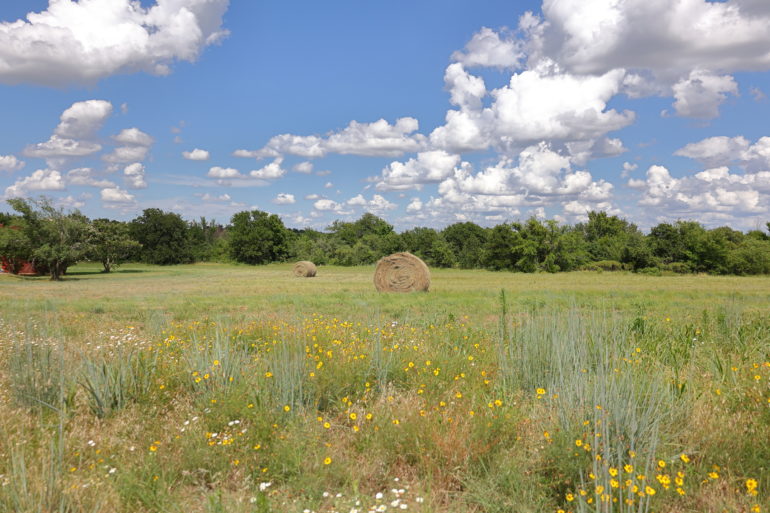
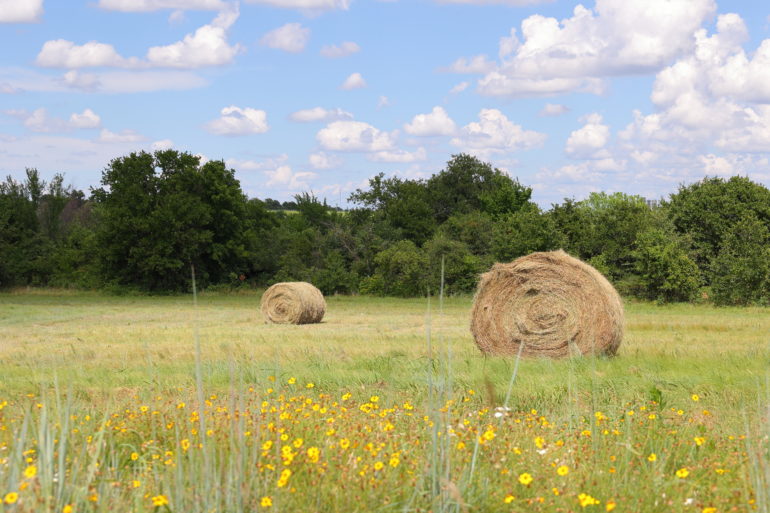

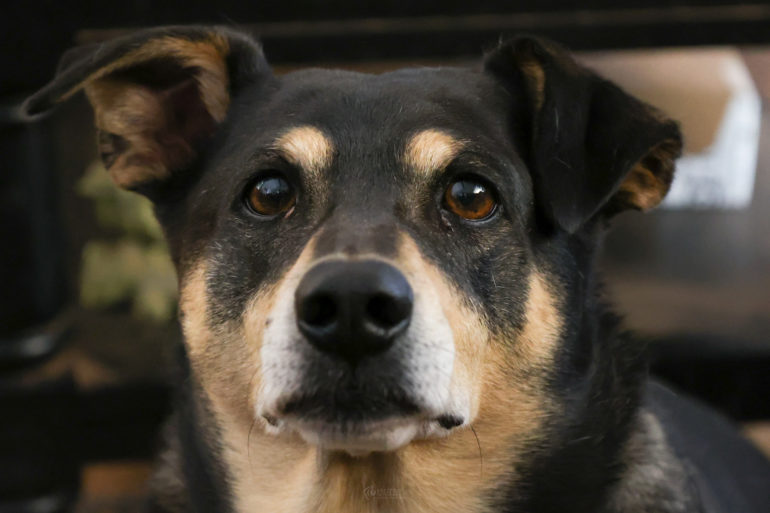
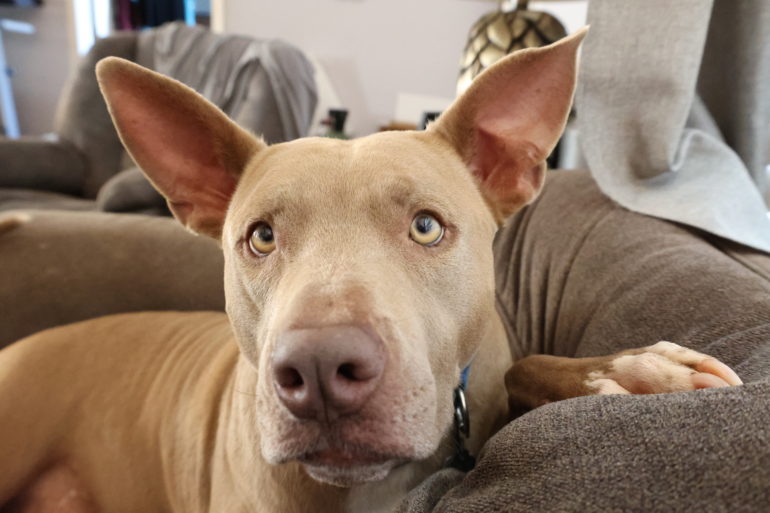
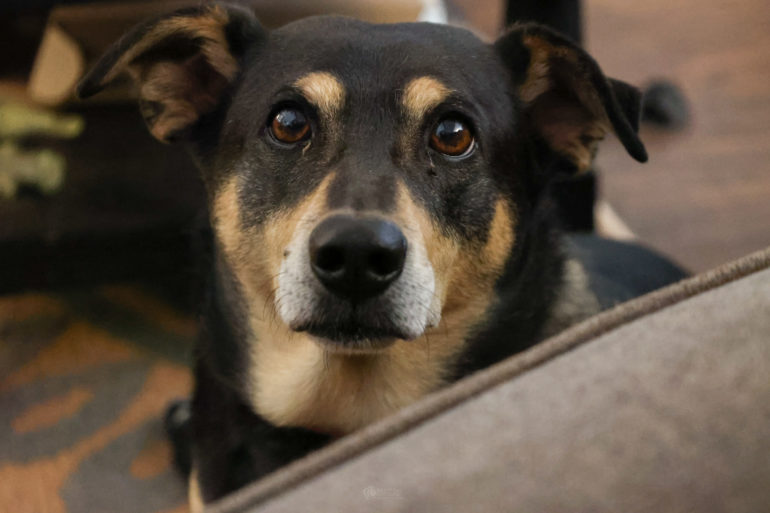
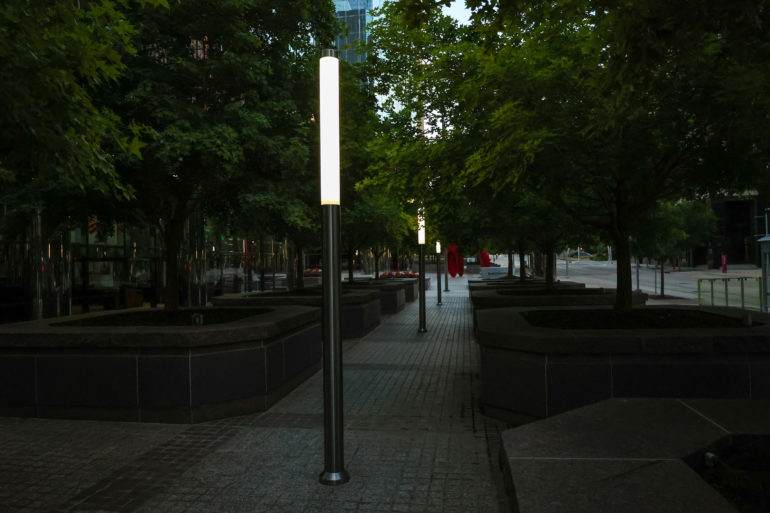





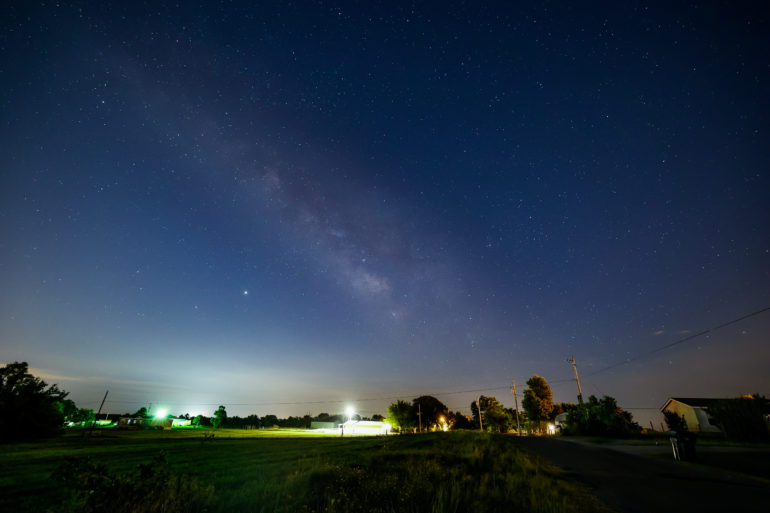
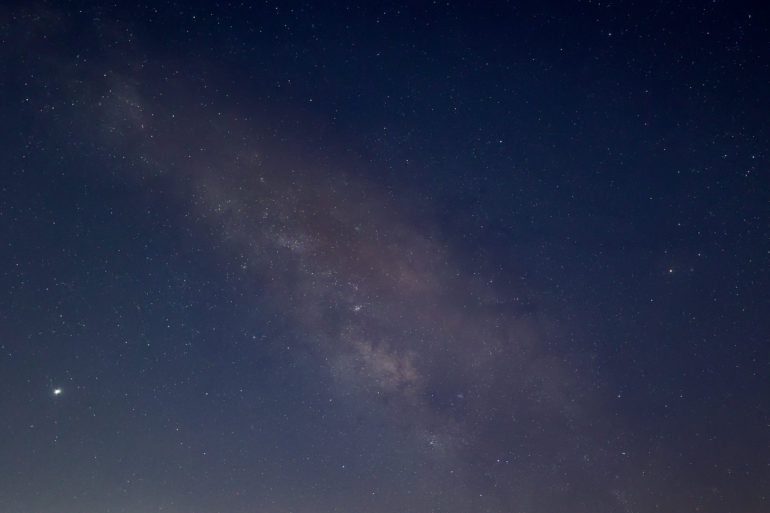
First Impressions

I have spent the last day and a half with the Canon EOS R6, and I have used it pretty extensively during that time: enough for me to say that it is clear Canon has been listening to the feedback it has been receiving from their faithful over the last two years. It’s clear to me that Canon has gone back to what they know, and instead of trying new gimmicks like the ill-fated touch bar found on the EOS R, they have made a valiant attempt to make this a true Mirrorless version of their old 6D DSLRs. This can be seen and felt in the design and control layout.
The implementation of IBIS has catapulted Canon into this century, and the 20.1MP sensor seems to be holding its own so far, especially when it comes to low light performance. The new AF system seems snappy, though we need to do far more extensive testing to really get a feel for it, and the same goes for testing build quality and the versatility of the RAW files. Because of the lack of RAW editing options, I will hold back my full thoughts about dynamic range and shadow and highlight recovery for the full review. However, I will say DR is on par with previous Canon cameras. Time will tell if it is better or not.
Having said all of this, the first impression the Canon EOS R6 has left on me is a good one. I am looking forward to pushing this camera to its limits. Stay tuned for our full review. Interested in owning one? You can pre-order the Canon EOS R6 now for $2,499 (body only) and $2,799 with the 24-105mm f4-7.1 STM (stay tuned for our review of this lens too).


